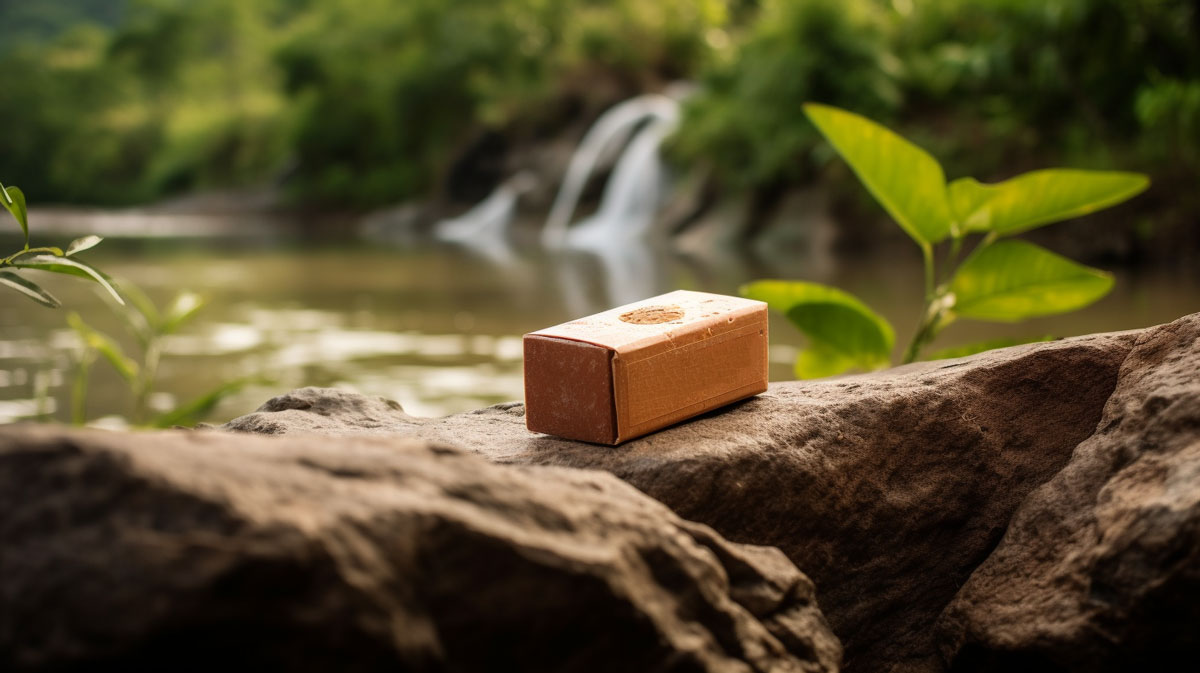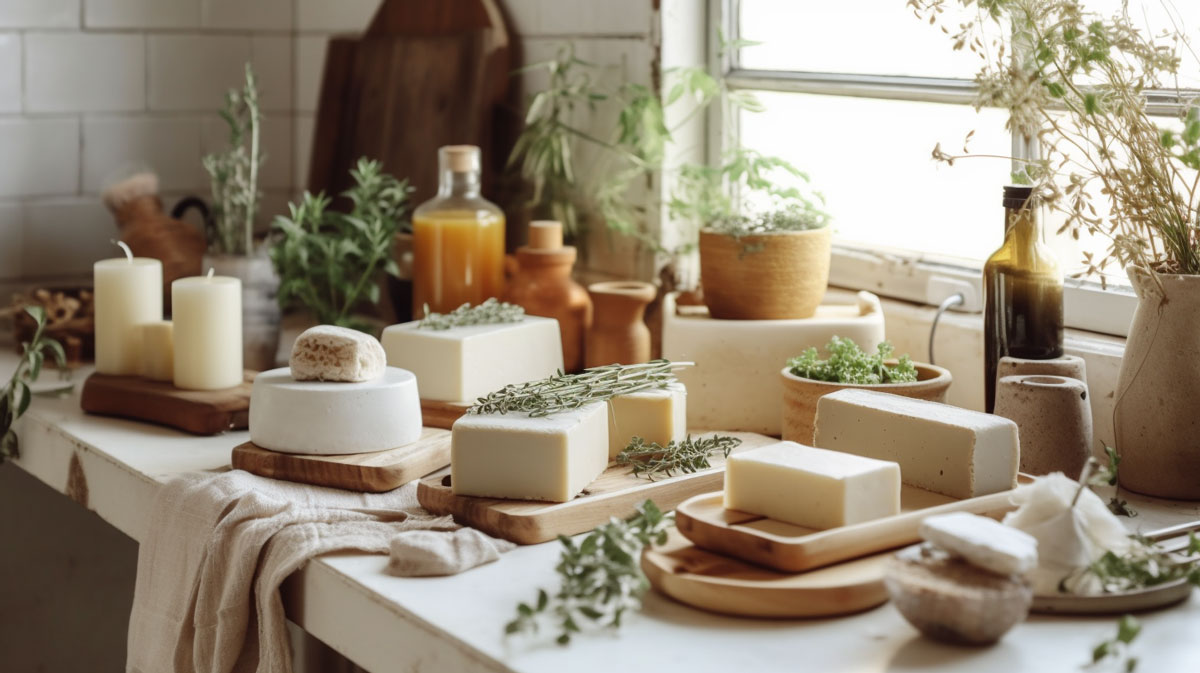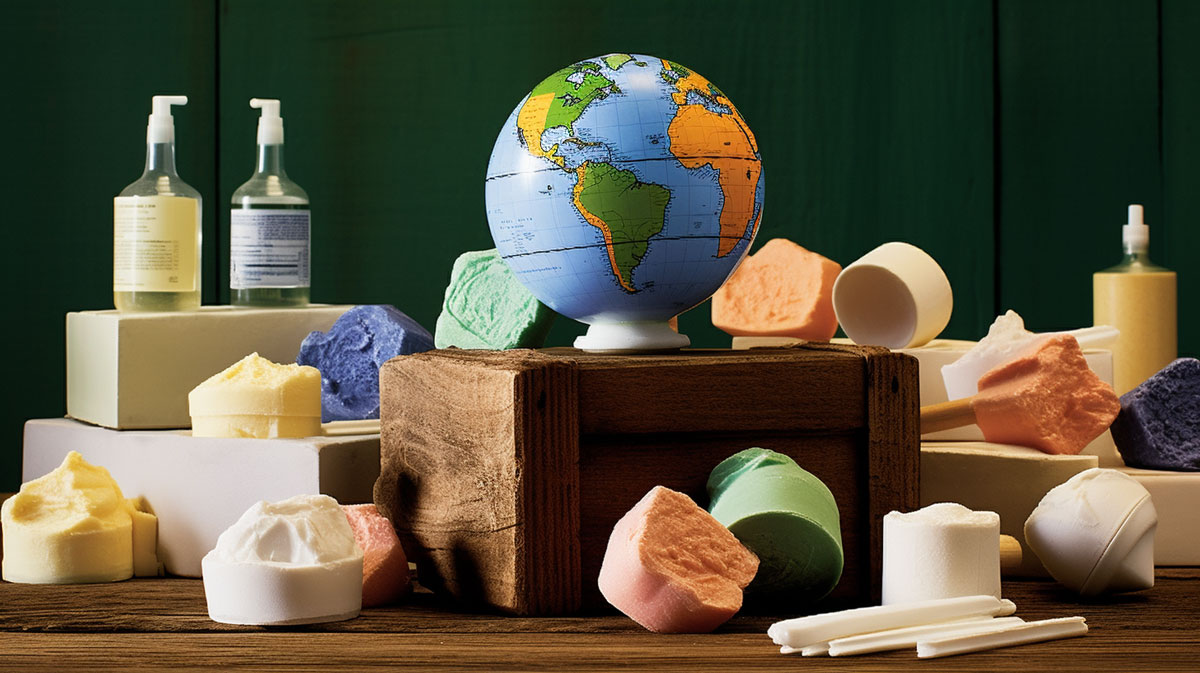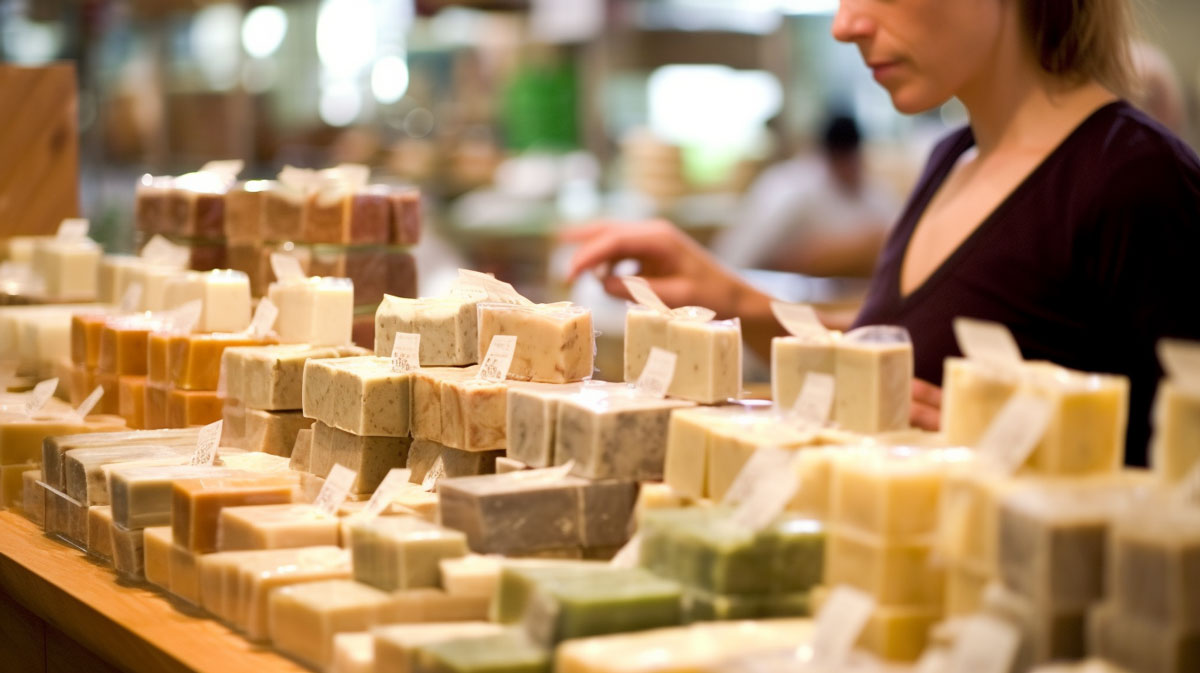In today’s world, where environmental concerns are at the forefront of global discussions, the shift towards eco-friendly products has never been more crucial. Among these sustainable choices, eco-friendly soap have emerged as a popular alternative to conventional soaps, which often contain harmful chemicals and contribute to environmental degradation. As consumers become more conscious of their carbon footprint, the demand for green, sustainable, and ethically-produced soap is on the rise.

Benefits of Eco-Friendly Soap
Environmental Advantages: Reducing Harm to Aquatic Life
One of the most significant benefits of eco-friendly soaps is their reduced impact on the environment. Traditional soaps often contain chemicals that, when washed down the drain, can harm aquatic life and disrupt ecosystems. In contrast, eco-friendly soaps are formulated with natural ingredients that break down more easily, ensuring that our rivers, lakes, and oceans remain uncontaminated.
Health Perks: Natural Ingredients and Skin Benefits
Beyond the environmental benefits, eco-friendly soaps are also better for our skin. Conventional soaps can strip the skin of its natural oils, leading to dryness and irritation. However, eco-friendly soaps, often crafted with organic and natural ingredients, nourish the skin, maintaining its natural balance. Ingredients like essential oils, botanical extracts, and herbs not only provide a delightful scent but also offer therapeutic benefits, making each bath a rejuvenating experience.
Economic Insights: Long-Term Savings and Sustainability
While eco-friendly soaps might sometimes come with a slightly higher price tag upfront, they offer long-term savings. Given their concentrated formulas and the absence of cheap fillers, they tend to last longer. Moreover, supporting brands that prioritise sustainable practices contributes to a larger economic shift towards businesses that value the environment and ethical production.

Top Eco-Friendly Soap Brands and Their Unique Features
The market is brimming with brands that have embraced the eco-friendly ethos, each bringing its unique touch to the world of sustainable soaps.
- Oars: Known for its comprehensive list of the best eco-friendly soaps, Oars emphasises the importance of natural ingredients and sustainable production.
- Treehugger: A brand that champions sustainability in all its products, their eco-friendly soap range is a testament to their commitment to the environment.
- Eco Girl Shop: Offering a diverse range of natural soaps, Eco Girl Shop focuses on holistic health and beauty, ensuring that each product is as kind to the skin as it is to the Earth.

Eco-Friendly Soap Bars vs. Liquid Soaps: Making the Right Choice
When it comes to eco-friendly soaps, consumers often face the dilemma of choosing between solid bars and liquid soaps. Both have their merits, but which one aligns best with a sustainable lifestyle?
Solid Soap Bars: The Zero-Waste Champion
Soap bars have seen a resurgence in popularity, and for a good reason. They typically come with minimal packaging, often wrapped in recyclable or compostable materials. This makes them a favourite among zero-waste enthusiasts. Moreover, without the need for plastic bottles, they significantly reduce plastic waste, making them a top choice for the environmentally conscious.
Liquid Soaps: Convenience with a Conscience
Liquid soaps, especially those sold in refill stations or in bulk, offer the convenience many seek. While they often come in plastic containers, many eco-friendly brands are now offering biodegradable packaging or refill options, ensuring that the environmental impact is minimised.

Packaging Matters: Sustainable Wrapping for Eco Soaps
In the world of eco-friendly soaps, the product itself isn’t the only thing that’s green. The packaging plays a pivotal role in determining a product’s environmental impact.
Biodegradable Wrappings
Many eco-friendly soap brands have transitioned to biodegradable wrappings, often made from materials like recycled paper or plant-based plastics. These wrappings break down over time, leaving no trace behind.
Refill Stations and Bulk Buying
A growing trend in the eco-friendly community is the rise of refill stations. Instead of purchasing new bottles or containers, consumers can refill their existing ones, drastically reducing plastic waste. Bulk buying, too, minimises packaging and often comes with the added benefit of cost savings.

DIY: Crafting Your Own Eco-Friendly Soap at Home
For those who love a hands-on approach, making eco-friendly soap at home is a rewarding experience. Not only does it allow for customization in terms of ingredients and scents, but it also ensures complete transparency in the soap-making process.
Natural Ingredients to Consider
-
Essential Oils: Lavender for relaxation, tea tree for its antibacterial properties, or citrus for a refreshing scent.
-
Herbs and Botanicals: Think chamomile for soothing properties or rose petals for a touch of luxury.
-
Base Oils: Olive oil for moisturizing, coconut oil for lather, or almond oil for a gentle touch.
The Soap Making Process
While soap-making can seem daunting, with the right tools and ingredients, it’s a straightforward process. Whether you opt for the cold process method or melt and pour, crafting your soap ensures you have a product that’s both eco-friendly and tailored to your preferences.

The Global Movement: Eco-Friendly Soap Around the World
Eco-friendly soap isn’t just a trend limited to one region; it’s a global movement. Across continents, cultures are embracing sustainable soaps, recognizing their benefits both for the skin and the planet.
Asia’s Herbal Traditions
In countries like India and Thailand, soap-making has long been intertwined with age-old herbal traditions. Ingredients like turmeric, neem, and lemongrass, renowned for their medicinal properties, are now making their way into eco-friendly soaps.
African Shea and Black Soap
Africa’s contribution to the eco-friendly soap market is undeniable. Shea butter, sourced sustainably from the African Shea tree, is a moisturising powerhouse. African black soap, made from plantain skins and cocoa pod powder, is revered for its natural healing properties.
European Sustainability Standards
European brands are setting high sustainability standards, with many adopting zero-waste practices and emphasising organic ingredients. Countries like France and Italy, with rich soap-making histories, are leading the way in eco-friendly innovations.
The Future of Clean Living with Eco-Friendly Products
As the world becomes more environmentally conscious, the shift towards eco-friendly products, especially soaps, is not just a passing trend—it’s the future. By making informed choices, consumers play a pivotal role in driving demand for sustainable products, pushing brands to adopt greener practices.
Frequently Asked Questions (FAQs) about Eco-Friendly Soaps
Q: Are eco-friendly soaps more expensive than regular soaps?
A: While some eco-friendly soaps might have a higher upfront cost, their long-lasting nature and the benefits they offer often provide value for money in the long run.
Q: Can I find eco-friendly soaps in my local stores?
A: Absolutely! With the rising demand for sustainable products, many local stores and supermarkets now stock a variety of eco-friendly soaps.
Q: How do I store my eco-friendly soap bars to ensure they last long?
A: Keeping them in a dry place and using a well-draining soap dish can help prolong their lifespan.






0 Comments